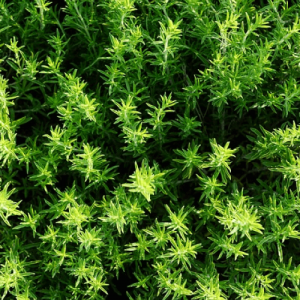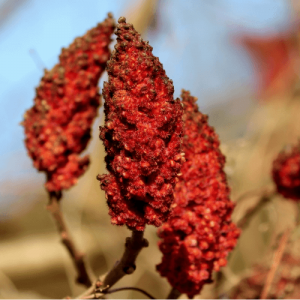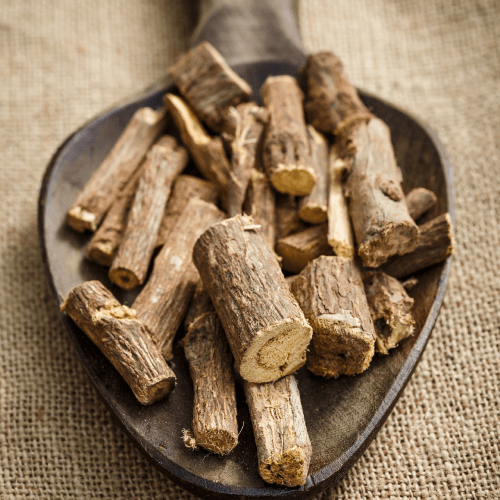
According to researchers walnut leaves (as do the nuts) have bacteria-killing and anti-parasitic properties. In France the leaf is used for sunburn and the treatment of dandruff. In Italy the preparation was used for repelling insects. Walnut leaf has healing properties. High concentrations of astringent compounds called tannins are found in the walnut leaf. Popular treatments for the leaf include topical preparations for the treatment of eczema and excessive sweating for the hands and feet.

Oranges are one of the most popular fruits worldwide and some reports suggest that its peel is the healthiest part of the entire fruit. The fruits peel is rich in flavonoids and several other important phytochemicals that offer various health benefits: it helps prevent cancer, improves lung health, aids diabetes treatment and it may strengthen our heart.

Squashes belong to one of the four varieties of Cucurbitaceae family of vegetables. Squash is a nutrient rich vegetable. Summer squash generally has higher water content than denser varieties of winter squash but winter squash is considered more nutritious. However, both the varieties of squash offer various health benefits: it is beneficial for heart, good for weight loss, boosts the immune system and it also may prevent cancer.

The cacao bean has been prized since ancient times for its delicious flavour and remarkable health benefits. Made from gently roasted cocoa beans, cacao powder is the purest, most natural form of chocolate. Modern research has revealed that it does indeed contain important compounds that can benefit your health. Cacao is rich in Polyphenols, it may reduce high blood pressure and may lower the risk of heart attack.

The raspberry plant is a familiar one that is found in both home gardens and the wild, but the red raspberry plant species is native to Europe and parts of Asia. The fruit itself, especially when eaten fresh, has many of its own health benefits, but the leaves of the Red Raspberry plant also come with a wide range of benefits and are used in herbal medicine. Red raspberry leaves are rich in vitamins and minerals.

Quinine comes from the bark of the cinchona tree. This tree is native to central and South America, as well as some islands in the Caribbean and western parts of Africa. Cinchona is used for increasing appetite; promoting the release of digestive juices; and treating bloating, fullness, and other stomach problems.

The chaga mushroom is a type of fungus that grows on birch trees throughout the northern hemisphere. It has been used for centuries in Siberia and other parts of Asia as a medicine to boost immunity and improve overall health: boosts the immune system and fights inflammation, lowers cholesterol, prevents and fights cancer and lowers blood sugar.

Cinnamon is a highly delicious spice made from the inner bark of the Cinnamomum tree. It is widely popular and has been prized for its medicinal properties for thousands of years. As a spice, cinnamon is available in powder form or whole, as pieces of bark. People can also use cinnamon essential oil and supplements. Cinnamon has anti-inflammatory properties, it may cut the risk of heart disease, may influence blood sugar levels and it may also prevent Alzheimer’s disease.

The vanilla is a tropical herbaceous plant which requires a supporting tree or pole for optimal growth. It grows in many places, including Central and South America, Mexico and Tahiti. Vanilla is one of the worlds most appreciated flavours but it is also a spice with very high levels of antioxidants. Vanilla promotes heart health, it has healing properties and it can help anxiety.

Thyme is a Mediterranean herb from the mint family whose small leaves grow on clusters of thin stems. Its flowers, leaves, and oil of thyme have been used as a medicine to treat a range of symptoms and complaints: it may lower blood pressure, may stop coughing and may boost our immunity.

Oregano is an aromatic flowering herb in the mint family. People have used it for thousands of years to add flavor to dishes and to treat health conditions. There are over 40 varieties of oregano, but Origanum vulgare is the one most linked to health benefits. This herb is rich in antioxidants, it may help fight bacteria, also may help reduce viral infection.

Although this unique herb is also known as wild oregano or sweet marjoram, marjoram and oregano are two different herbs. Besides as a common cooking spice, people make medicine from its flowers, leaves or oil. Research suggests that marjoram may have several health benefits: may have antimicrobial activity or may alleviate digestive issues.

Nutmeg is the seed of the fruit of an evergreen tee which grows mainly in India, Indonesia and Sri Lanka. Although the nutmeg is more commonly used for its flavor in desserts or curries than its health benefits, this seed contains powerful compounds that may help prevent disease and promote our overall health.

This plant is processed in different ways to yield different kinds of peppers. Pepper has its origins in South India but it is grown in other tropical countries, too. Black pepper is also known as “King of Spice” since it also has plenty of benefits for our body. It may prevent cancer, stimulate digestion or treat skin problems.

Turmeric or Indian saffron is native to Southeast Asia and is grown commercially primarily in India. Turmeric is a common spice and a major ingredient in curry powder. Capsules, teas, powders, and extracts are some of the turmeric products available commercially.

Caraway is an aromatic plant with tiny white flowers, it is very popular as a spice in cooking but it is also often used for medicinal purposes. Caraway is loaded with fiber and several important minerals, including iron, magnesium, copper, and calcium. It’s also a rich source of antioxidants. Caraway may promote weight loss, encourage healthy digestion and reduce inflammation.

Sumac grows in subtropical and temperate regions throughout the world, especially in East Asia, Africa, and North America. It is a great spice that adds a rich flavor to many dishes that people prepare in kitchens around the world. Thanks to its rich content of polyphenols and flavonoids, adding a dash of sumac into your diet may help lower cholesterol levels, stabilize blood sugar and even reduce bone loss.

Ginger is a flowering plant that originates to China and it is among the healthiest spices on the world. It is a very popular spice in cooking and medicine at the same time. This plant has several health benefits since it may relieve nausea or pain, reduce inflammation and it may also lower blood sugars.

Cloves are the flower buds of the clove tree and it originates from Asia and South America. People use cloves mostly as a spice in cooking but also in traditional medicine. This spice is rich in vitamins, minerals and antioxidants. Cloves can help protect against cancer; it can kill bacteria and also can improve liver health.

Coffee is one of the world’s most popular beverages, it contains a number of useful nutrients and antioxidants. Drinking coffee can improve our energy levels because it contains caffeine. Moreover, coffee can improve our physical performance as well, may protect from Alzheimer’s Disease, Dementia and may lower the risk of type 2 Diabetes.

Green tea, natived to China and India is considered to be one of the healthiest beverages on our planet. This type of tea contains the most antioxidants and has several benefits. It may improve brain function, increase fat burning, compounds in green tea may reduce risk of cancers and it may reduce heart disease risk, too.

Stevia is an intensely sweet-tasting plant that is originated from Paraguay and Brazil but also grows in China and Japan. A non-nutritive sweetener is one that contains little to no calories. Stevia leaf powder may help manage cholesterol and it is known as a healthful sugar alternative for people with diabetes.

Licorice comes from the root of a plant called Glycyrrhiza glabra. Due to its sweet flavor, licorice is popular as a sweetener in candies and beverages but it is also available in many other forms, including herbal teas, capsules of dried herb or liquid extract.

This herbal plant has been considered for decades by herbalists to be a useful remedy for a cough, wounds, inflamed skin and dermatitis. The leaves and seeds are used to extract the beneficial compounds of this plant. Furthermore, the ribwort plantain leaves can also be used to make a tea as an effective cough medicine.

Red clover is a flowering herb plant, its flower tops are used to make medicine. These brightly colored flowers contain many nutrients including calcium, chromium, magnesium, niacin and vitamin C. It may help lower blood fat levels, treat asthma or help with skin disorders. On market, it is available as tablets, capsules or tea, but it can be combined with other herbs, too.

Lucerne, also named Alfalfa is a plant rich in nutrients, vitamins and minerals. This medicinal herb can be taken as a supplement or in the form of dried leaves, seeds, and sprouts. It possesses antioxidant, diuretic, and cerebroprotective properties. It may help lower cholesterol levels, improve metabolic health, and relieve menopause symptoms.

Dandelion is a plant with yellow flowers what botanists consider to be herbs. In traditional herbal medicine practices, this pant is revered for their wide array of medicinal properties. Among potential benefits you can find the followings: providing antioxidants, reducing cholesterol, regulating blood sugar, cancer risk and inflammation.

Cat’s whiskers owes its name to the four strikingly long stamens, which stick out, as long as a pen. It’s dried leaves and twigs are used for medicinal purposes, also widely used as herbal tea called Java tea in European and Asian countries.

Elderberry refers to several varieties of the Sambucus tree, which has clusters of white flowers and black or dark blue berries. It is one of the most commonly used medicinal plants in the world such as a supplement to treat cold and flu symptoms or infections and support heart health.

Rose hips generally grow in early autumn, they have usually red-orange colour but yellow and black varieties can also be found. Rose hip contains the seeds of the rose plant: thanks to its rich nutrients, high antioxidants and disease-fighting properties, rose hips have gained attention for their role in health and beauty.

Stinging nettle is a popular herbal remedy with many uses, it can be purchased in many health food stores, but you can also grow it yourself. Leaves and root of this plant provide the following nutrients: vitamins, minerals, fats, amino acids, polyphenols and pigments. Stinging nettle hairs contain several chemicals, too that have pain-relieving and anti-inflammatory properties.

White tea is harvested just before the tea plant’s leaves fully open, when the young buds are still covered by fine white hairs. Of all the tea types, white tea is the least processed, the purest, the most highly prized tea and has the most antioxidants of all tea types. It can help reverse skin damage (stress, diet or sun) and can help the skin to rebuild resistance to stress.

After harvesting, black tea leaves go through a process of wilting, bruising, rolling, and oxidation which turns the leaves from green to a dark brown/black color. Black tea is stronger in flavor and contains more caffeine than other teas. This type of tea may reduce the risk of several cancers, protect the heart against atherosclerosis, and help maintain healthy blood pressure.

Rooibos tea is also known as read tea is a herbal tea. It is a sweet, flavorful, caffeine-free alternative of black and green tea. Rooibos tea also contains several antioxidants, which may help explain some of the tea’s health benefits.

Herbal teas are made from dried fruits, flowers, spices or herbs. This means herbal teas can come in a wide range of tastes and flavors, they are naturally free of sugar and calories and have health-promoting properties.

Ceylon tea is popular type of black tea that is produced in the highlands of Sri Lanka. Ceylon teas are made from the dried leaves of the tea plant. This tea have lots of health benefits, it may aid weight loss, help stabilize blood sugar, support heart health.
